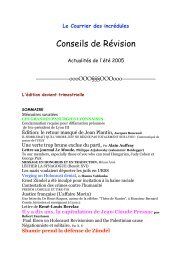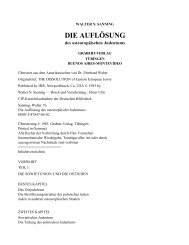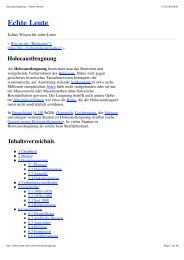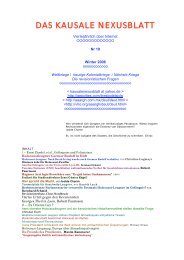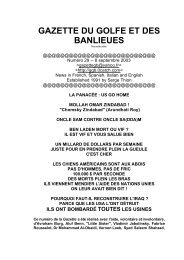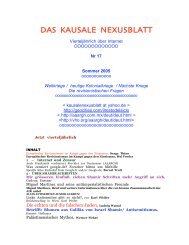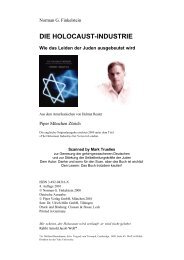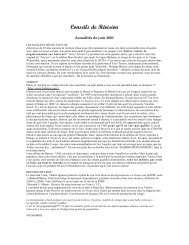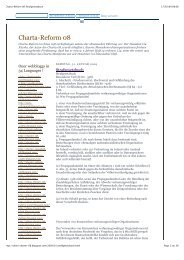You also want an ePaper? Increase the reach of your titles
YUMPU automatically turns print PDFs into web optimized ePapers that Google loves.
6. Literary Variations on the Propaganda 113<br />
was an existing building, in which the old ceiling was replaced by a concrete<br />
slab.<br />
Until 1970 Gulba did not even know the official term ‘Bunker.’ He only<br />
learned it at the end of 1974, when the International <strong>Auschwitz</strong> Committee<br />
sent him their “Biuletyn Informacyjny” (Information Bulletin) no. 9, which<br />
contained an article speaking of ‘<strong>Bunkers</strong>.’ 382 From the same source he also<br />
learned of the (alleged) existence of ‘Bunker 1’! <strong>The</strong> story of the building of<br />
the access road to ‘Bunker 2’ by order of the <strong>Auschwitz</strong> Construction Office is<br />
simply a literary trick to justify his self-styled ‘eyewitness’ testimony: as we<br />
have already seen, no report about the construction of the camp in 1942 mentions<br />
that job.<br />
6.3.3. Filip Müller<br />
This witness was deported to <strong>Auschwitz</strong> from Slovakia on April 13, 1942,<br />
and registered under the ID no. 29136. A month after his arrival, he was transferred<br />
to the special unit of crematorium I and later to the crematoria at Birkenau,<br />
where he stayed until January 1945, when he was moved to Mauthausen<br />
and later to Melk. His testimony of 1979 refers to 1944: 384<br />
“<strong>The</strong>re was great activity also in the whitewashed farmhouse, separated<br />
from the camp of Birkenau by a wooded area which was now bunker<br />
5.”<br />
“In addition, the farmhouse, which had served as a place of extermination<br />
in 1942, was put in running order. Its four rooms served as gas chambers<br />
while an additional four cremation pits were dug outside. <strong>The</strong> changing<br />
rooms were located in three wooden barracks, and the whole complex<br />
was known as bunker 5.” 385<br />
“[…] while on the site of bunker 5 with its four gas chambers corpses<br />
were burnt in four pits.” 386<br />
“[…]; mass extermination in bunker 5 had ceased altogether. For some<br />
time now no corpses had been burnt in the pits behind crematorium 5. But<br />
the ovens in this crematorium were operating again. As we had feared<br />
there was another selection. It came on 7 October.” 387<br />
“<strong>The</strong> hot summer had ended and now it was autumn. For some time<br />
now pits had not been used for burning corpses, […]” 388<br />
Even as late as 1979, Filip Müller had only a very superficial and incoherent<br />
knowledge of the propaganda story of the ‘<strong>Bunkers</strong>.’ His summary account<br />
adds nothing new: he has taken over the designation “Bunker V” from<br />
Paisikovic, whereas the number of rooms in the house (four) and the number<br />
384 F. Müller, Eyewitness <strong>Auschwitz</strong>. Three Years in the Gas Chambers, Stein and Day, New York<br />
1979, here quoted from the 1999 reprint by Ivan R. Dee, Chicago, p. 124.<br />
385 Ibidem, p. 133.<br />
386 Ibidem, p. 143.<br />
387 Ibidem, p. 153.<br />
388 Ibidem, p. 160.



